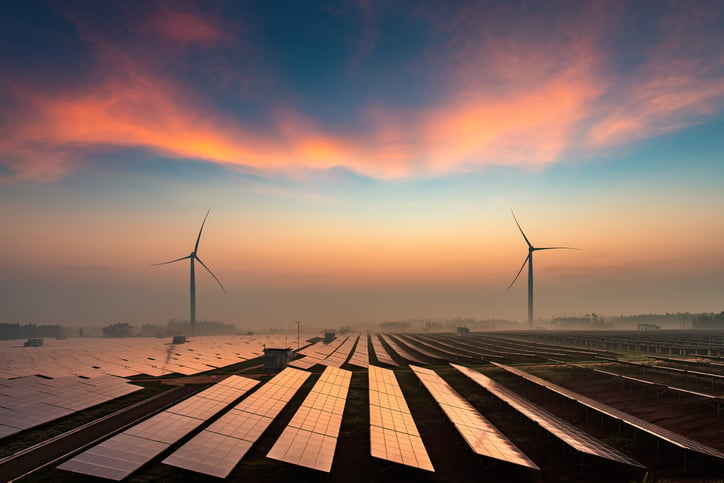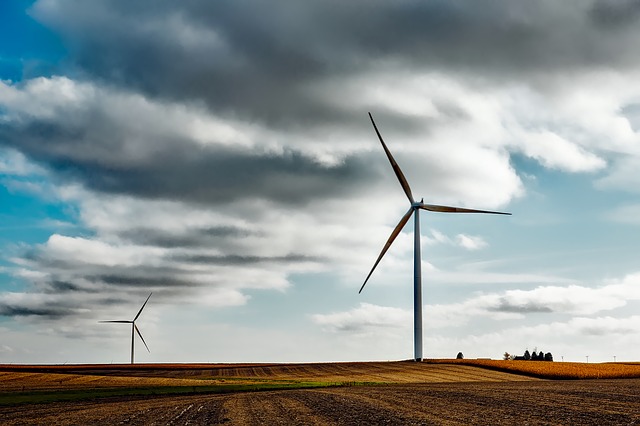How Long Does It Take to Install a Distributed Wind Turbine?
People have harnessed the power of the wind for thousands of years, in places like Egypt, China, and Europe. Once used to crush grain and cut wood, wind power soon became integral to pumping water to the highlands so farmers could irrigate their crops.
Then came the discovery that wind energy could efficiently generate electricity. Flash forward to the end of 2018, when the wind power capacity in the United States was 96,433 megawatts. Wind turbines are the second largest renewable energy source in the US (generating nearly 5 times the power of solar in 2016) and will quickly outpace hydroelectric energy as number one.
Today more than ever, small or distributed-scale wind turbines look very enticing to energy users looking to reduce their energy expenditure. Wind resources are recognized for their value, and the lower carbon footprint is also a great bonus. But exactly how long does it take to install a home wind turbine?
What Does Creating a Small Wind Electric System Entail?
Thanks to the emergence of advanced wind turbine technology, such as the pitch actuator system, the costs related to wind power production have decreased tremendously. With this new and drastic reduction in the cost of energy from distributed wind turbines, more individuals, farmers, and businesses are installing distributed wind turbines.
With small-scale wind, they have the ability to generate sufficient power for their own day-to-day needs and then some. Many people even sell their excess power back to the provider once they have wind energy systems in place. This provides credit on their electricity bills. It’s a win-win scenario, right?
Still, many landowners have reservations when it actually comes down to installing a wind turbine, like:
- How long will it take to install?
- How to pay for it?
- Where to install it?
Worry no more; here’s everything you need to know about installing a distributed wind turbine.
How Long Does It Take to Install a Wind Turbine?
The physical installation process for distributed wind generation is surprisingly efficient. The permitting process, however, is very location dependent and can be a significant challenge to installation.
Local authorities may put up permitting roadblocks because of
- Aesthetics
- Safety
- Environmental concerns (the installation will impact wildlife, disrupt bird flight, etc.)
- Sound pollution
When it’s all said and done, installing a distributed wind turbine can be nearly as time-consuming as a full-blown large wind farm. To speed up the process, work with organizations that have experience installing turbines and dealing with permitting hassles.
How Do I Pay for Wind Turbine Installation?
The first consideration in building a small-scale wind farm is finding the necessary financing. With a large utility-scale wind installation, the developer will raise capital and then get to work.
Starting small-wind electric systems, however, requires working backward. You first ensure there is a good resource on your site, then finance it privately or apply for a wind grant from the government.
There are often state-run programs to support the installation of renewable energy production. You can apply for an NYSERDA grant if your product is large enough. The U.S. Department of Agriculture also has up to 25% funding for renewable energy and energy efficiency projects through the Rural Energy for America Program (REAP).
Even without subsidies, over time the clean energy you produce with properly-sited distributed wind turbines will cover the costs spent to erect them. Consider the installation of a distributed wind turbine an investment more than an immediate gain.
How Do I Find a Site for a Wind Turbine?
Not everyone has a perfect site for distributed wind. Going outside every day and feeling a breeze doesn’t mean that a particular location is a good spot for a wind turbine. In fact, the wind speed on the ground is not a good metric for installation at all.
The only real metric for installation is the average annual wind speed at hub height. If you can meet that goal, you can work with an installer to erect the actual turbine. If not, you’ll need to spend more time finding a viable location.
The flagging of trees at a prospective turbine site is a good indicator of average annual wind speed. The National Renewable Energy Lab, a division of the US Department of Energy, is also working to develop tools to assist with the evaluation of distributed wind turbine sites. Soon, a landowner will be able to pull up aggregated wind data just as easily as viewing a satellite picture on google maps!
Final Thoughts on Wind Turbine Installation
Finally, you may want to think about how much energy production it will take to pay for installation, annual maintenance, and day-to-day operation of a distributed wind turbine.
That may depend on the local power purchase agreements and the actual site location. But, thanks to technological advances like the inverter/converter, the need for unscheduled wind turbine maintenance is lower than ever.
The Distributed Wind Energy Association is working with steady resolve in DC to provide a level playing field for prospective distributed wind turbine owners. The enormous variations in permitting found across different states and localities, the uncertainty of future investment tax credits, and even the cost of distributed wind turbines are all real challenges that require real solutions. DWEA is collaborating with US legislators to ensure that the future of distributed wind energy is focused on a fair and streamlined process for the growth of renewable energy in the US.
At the end of the day, how long it takes to install a distributed wind turbine varies. Some turbines can be erected in hours, while other larger installations might take weeks.
Want to learn more about how small-scale wind turbines can benefit from innovative technologies? Contact us:
(Editor's Note: This blog was originally published in October 2020 and has been updated in September 2022 with current information.)




